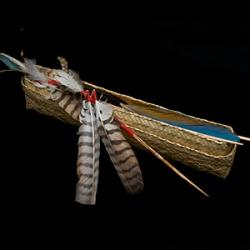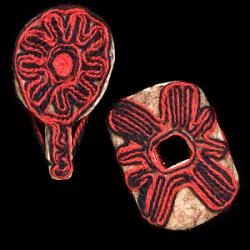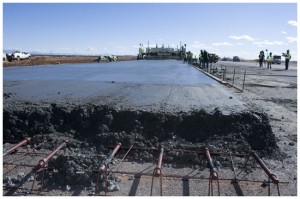Fed’s Beige Book: New Mexico region’s economy improved in March – New Mexico Business Weekly:.
Author: lydia
Come Fly With Us! Fourth Annual Ruidoso Kite Festival April 23 – 25, 2010
Joan Park, Bruce and Beth DeFoor, Dawnn Moore, and  ENMU Ruidoso announce the:
4th ANNUAL RUIDOSO KITE FESTIVAL !!!
Please plan to come and share all your beautiful kites and your STERLING personalities with our little Village. If you have been here before, you know how much fun it is and if you haven’t we especially want to invite you and make you feel welcome in our beautiful mountain resort.
Festival dates and times-
Friday, April 23       1 pm to 5 pm
Saturday, April 24  9 am to 5 pm (Dinner together later at a restaurant yet to be named)
Sunday, April 25    12 to 4
We know it will be yet another cool experience. If you can’t make all the days, just come for what you can.
If you have been here you know what a great flying field we have here. It is the best I have ever flown at. It is all green grass…It’s flat…no sagebrush…no cactus…no stickers…no fences…no highways…no highline wires…two good paved parking lots adjoining…
and best of all there is the beautiful snow capped Sierra Blanca Mountain right behind us. It’s quite a sight to fly kites in front of that kind of a backdrop! Looks like we will probably have to put up with a soccer practice just like last year, but they shouldn’t last long and the field is big.
Ruidoso is a tourist village and so there will be plenty of out-of-towner’s there. The newspaper always does a big story and the local morning radio shows also promote the event. The public schools are supporting it as well so there show be plenty of kids that want to make and fly kites. We will have a kite making station set up so if that’s your thing, then we want you there to help too. We have made up to 1,200 kites for kids during one three day festival.
We are trying hard to get free complimentary rooms for you professionals. We can’t promise free rooms to everyone, but we will try if you let us know. The first flyers who respond will be almost certain to stay in a free room.
This event promises to be bigger and better than ever. We are looking forward to seeing you again and to meeting some new kite flying friends for the first time!
If you think you may be able to attend, please contact one of our team as soon as possible. When you contact us, please list your ALL your phone numbers, home address, and email addresses. (this will help us update our list with current contact info.)
Please also send this to other flying friends you think would be interested. We can’t promise all the new ones free rooms (since we have no way of knowing how many that might be!) but we will still try hard to see if we can!
TOP TEN REASONS TO ATTEND AND FLY IN RUIDOSO:
1. Ruidoso is a beautiful ski resort village
2. You will feel right at home, only better
3. Flying in the mountains will increase your height
4. You will get to see Ollie the Octopus again
5. Kites prefer pine scented air
6. Bruce’s kites miss your kites
7. It won’t be the same without you
8. Economy schmonomy
9. If you don’t come, you will not be here!
…and the number one reason to come to the mountains and fly is…
10. Anyone can fly on a beach!
Pending Home Sales Show Healthy Gain, Hint at Spring Surge
Pending home sales rose in February, potentially signaling a second surge of home sales in response to the home buyer tax credit, according to the National Association of Realtors®.
The Pending Home Sales Index,* a forward-looking indicator based on contracts signed in February, rose 8.2 percent to 97.6 from a downwardly revised 90.2 in January, and remains 17.3 percent above February 2009 when it was 83.2. The data reflects contracts and not closings, which usually occur with a lag time of one or two months.
Lawrence Yun, NAR chief economist, said the improvement is another hopeful sign. “The rise in buyer contact activity may signal the early stages of a second surge of home sales this spring. The healthy gain hints home prices are continuing to flatten,†he said. “We need a second surge to meaningfully draw down inventory and definitively stabilize home values.â€
The PHSI in the Northeast rose 9.0 percent to 77.7 in February and is 18.9 percent higher than February 2009. In the Midwest the index jumped 21.8 percent to 97.9 and is 18.7 percent above a year ago. Pending home sales in the South increased 9.2 percent to an index of 107.0, and the index is 17.5 percent higher than February 2009. In the West the index fell 4.8 percent to 98.0 but is 14.6 percent above a year ago.
“Anecdotally, we’re hearing about a rise of activity in recent weeks with ongoing reports of multiple offers in more markets, so the March data could demonstrate additional improvement from buyers responding to the tax credit,†Yun said.
The National Association of Realtors®, “The Voice for Real Estate,†is America’s largest trade association, representing 1.2 million members involved in all aspects of the residential and commercial real estate industries.
New Mexico Ski Resorts Make Summer Shine With Events, Activities – OnTheSnow
The temps may still be low, but there’s already much to look forward to this summer! With record snowfalls come record wildflower blooms, so be sure and bring our camera.
New Mexico Ski Resorts Make Summer Shine With Events, Activities – OnTheSnow.
Santa Fe’s Museum of Arts & Culture Presents “Huichol Art and Culture: Balancing the World”
For the first time, the Museum of Indian Arts and Culture/Laboratory of Anthropology presents a significant collection of Huichol art from the early part of the last century in Huichol Art and Culture: Balancing the World. The exhibition opens at the Museum of Indian Arts and Culture April 11, 2010 and will run through March 6, 2011.
There are important ties between Huichol work and Native American, prehispanic, and Hispanic art histories and cultures. Known today for colorful, decorative yarn paintings, the origins of modern Huichol art are found in the earlier Huichol religious arts of the Robert M. Zingg ethnographic collection at the Museum of Indian Arts and Culture.
Huichol Art and Culture: Balancing the World focuses on the Huichol, a Native American people of western Mexico who for many centuries have retained their unique culture and prehispanic religious beliefs. Their remote location in the rugged Sierra Madre Occidental mountains primarily in the states of Jalisco and Nayarit has allowed for greater resistance than any other indigenous group to the forces of Christianization and acculturation. The Huichol people today continue to create traditional art and practice ancient rituals that predate the time of Spanish contact.
From 1934-1935, Dr. Robert Mowry Zingg (1900–1957) was the first American anthropologist to conduct extended ethnographic fieldwork among the Huichol in the community of Tuxpan de Bolaños. Zingg lived with Huichol families and participated in everyday life, while studying their mythology and ceremonialism. Huichol Art and Culture: Balancing the World presents the collection of Huichol artifacts which Zingg collected on behalf of the Laboratory of Anthropology during the earliest years of its history as an institution.
In the past and today, Huichol art is made to communicate with a pantheon of ancestors and gods. When Zingg arrived in Tuxpan, he found that most Huichol adults were occupied with making art. As he observed, the Huichol constantly create offerings which serve as visual prayers to the gods. As part of the ceremonial cycle, the Huichol make pilgrimages to leave offerings at sacred sites.
Ceremonial offerings to the gods are the precursors to the art of modern Huichol yarn painting. Early Huichol votive art evolved into art produced for sale beginning in the 1950s, when artists adapted traditional techniques, designs, and materials to “paint†in yarn. Sophisticated and vibrant Huichol yarn paintings have now become renowned in the global art market.
Among the highlights of the Zingg collection are outstanding examples of ancient, symbolic textile designs that were intricately woven on backstrap looms by Huichol women. The collection features prayer arrows, richly decorated votive gourd bowls, and other offerings for the gods. Oversized shamans’ chairs and diminutive gods’ chairs are unique to Huichol ceremonies. Colorful macaw feathers, beaded jewelry, deerskin quivers, embroidered clothing, and hats adorned with feathers, squirrel tails, and ribbons all attest to a time and a culture where art objects were made for everyday and ceremonial use, not tourist consumption.
The concept of balance is central to Huichol art and culture. The balancing of opposites, such as the wet and dry seasons, or darkness and light, is a prevalent theme in Huichol art. Huichol ceremonies are performed and offerings are made to keep the world in balance, ensuring successful crops and hunting, fertility, and health. Today, the Huichol say that they continue to make art and perform the centuries-old rituals not just for their own people, but for the benefit of everyone in the world.
The concept of balancing opposites, so central to Huichol culture, is also basic to the Pueblo worldview and is seen in Pueblo architecture, government, and ceremony. A further connection to Pueblo culture can be found in the Uto-Aztecan language of the Huichol. It is related to the language of the ancient Aztecs of central Mexico, to the Cora, to the Tohono O’odham and Hopi of Arizona, and to the Tanoan languages of the Northern Rio Grande region of New Mexico.
Zingg, who spent his youth in northern New Mexico, noted a similarity in “the richness of the ceremonial life of both the Huichols and the Pueblos.†He and other scholars have drawn parallels between the two cultures, including the importance of the cardinal directions and elaborate religious symbolism in art and decoration involving the deer, fire, rain, corn, and concepts of growth and fertility.


Ski New Mexico: Ski Season Extended!!
Spring is a great time to enjoy skiing in New Mexico, longer warm days with great snow and affordable skiing. Spring breakers and everyone else are going to be able to take advantages lots of extensions to New Mexico skiing this Spring. Now is the time to plan your spring “winter” get a-way. “Come let our family take care of your family”
- Sipapu have extended their hours of operation(see below).
- Ski Apache has announced an extension to the season, they will now close on April 11 to accommodate the great response they have received due to exceptional snow.
- Angel Fire has extended their “white sale” until the end of the season.
- Angel Fire has offered night skiing for the first time in the history of New Mexico skiing.
- Mother nature has extended “the amount of daylight” to allow warmer and better lighted days.
- The snow gods have blessed New Mexico with exceptional snow depth and quality.
Several other resorts are considering extending their seasons.
Sipapu Ski and Summer Resort to Expand Operating Hours
Vadito, NM: On pace for yet another record-breaking season, Sipapu Ski and Summer Resort, New Mexico’s year-round destination for family-friendly, family fun, announced it will expand its lift operating hours beginning March 14 through the end of the season. From March 14-21 and again March 27-28, lifts will be open from 9 a.m. until 5 p.m., giving snow enthusiasts an extra hour every afternoon on the slopes.
Sipapu will continue to offer expanded afternoon hours through the rest of the season: from March 22-26 and April 3 until closing day (scheduled for April 11), lift operations will go from 9:30 a.m. until 4:30 p.m. The full-service rental shop and ticket office will open at 8:30 a.m. on March 14-21 and March 27-28; the rental shop and ticket office will resume their normal 8 a.m. opening time March 22-26 and April 3 until closing day.
Sipapu is scheduled to again be the last resort to close in New Mexico, with closing date set for April 11 weather and conditions permitting – visitors are encouraged to check SipapuNM.com for the latest updates.
23 Highway Improvement Projects Underway or Completed in New Mexico Thanks to Stimulus Law
WASHINGTON — There are currently 23 American Recovery & Reinvestment Act (ARRA)-financed highway construction projects underway or completed in New Mexico involving $160.2 million in funds, according to data released today by the Washington, D.C.-based American Road & Transportation Builders Association (ARTBA). The projects underway or completed have supported or are supporting 4,457 jobs in New Mexico that would otherwise not exist, says ARTBA Vice President of Economics & Research Dr. Bill Buechner.
ARRA, signed into law on February 17, 2009, provided $48 billion for transportation improvements over two years, including $27.5 billion for highway, bridge and related construction projects nationwide. The law is having significant impacts on the transportation construction industry in all 50 states.
ARRA provided $252.6 million to New Mexico for highway, bridge and related improvements. This one-time bonus added more than 81 percent to New Mexico’s regular federal highway funds under the current federal surface transportation law — Safe, Accountable, Flexible, Efficient Transportation Equity Act: A Legacy for Users (SAFETEA-LU) — bringing the state’s total federal highway funding in 2009 to a record $562.8 million.
According to Buechner, a Harvard-trained economist, another 67 projects have been identified and are slated to be under construction shortly.
The following shows the number of ARRA-financed highway projects and amount obligated in each New Mexico congressional district.
Congressional District Number of projects Amount Obligated
---------------------- ------------------ ----------------
1 10 $33,340,343
--- --- -----------
2 42 $69,326,633
--- --- -----------
3 38 $146,608,216
--- --- ------------
A full report can be obtained by contacting ARTBA’s Jeff Solsby at jsolsby@artba.org or 202-289-4434.
For 108 years, ARTBA has represented the U.S. transportation design and construction industry before Congress, the White House, federal agencies, news media and general public.
New Mexico telephone cooperative gets $11.2M stimulus grant for massive fiber network
The NTIA is on a roll! Today, the agency announced that it is awarding $11.2 million to ENMR Telephone Cooperative, Inc. (which does business as ENMR-Plateau) to improve broadband access and speeds in eastern New Mexico and west Texas via a 1,600-mile ring of fiber. Among other benefits, the project plans to expand distance learning opportunities for students at schools and libraries in rural areas and enable connectivity to a telehealth network being constructed across New Mexico, Arizona, Utah and Colorado.
“This critical investment will expand high-speed Internet service access to New Mexico schools and hospitals, and eventually homes and businesses, helping to make them full participants in today’s 21st century information economy,†Locke said. “Having access to the Internet’s economic, health and educational benefits will help to improve the quality of life in these communities.â€
The Department of Commerce’s National Telecommunications and Information Administration’s (NTIA) Broadband Technology Opportunities Program (BTOP), funded by the Recovery Act, provides grants to support the deployment of broadband infrastructure, enhance and expand public computer centers, and encourage sustainable adoption of broadband service.
“This $11.2 million grant to ENMR Telephone Cooperative will make it possible to build miles of new fiber-optic lines, which will benefit businesses, schools, libraries, public safety entities, and help advance the telehealth network being developed across New Mexico,†said Senator Jeff Bingaman. “This grant is good news for eastern New Mexico, as well as for our entire state.â€
“Over the last 10 years, America has gone from being a world leader in Internet penetration to now lagging in that effort, and as a state, New Mexico sadly falls towards the bottom of that list,†said Senator Tom Udall, a member of the Senate Commerce Committee. “I am proud this Recovery award will help develop the needed broadband infrastructure in New Mexico that will help enable teleheath services, distance learning programs and attract future businesses and jobs to our state.â€
“This is great news for eastern New Mexico,†said former New Mexico governor Toney Anaya, executive director of the New Mexico Office of Recovery and Reinvestment. “The Recovery Act continues to invest in New Mexico’s communities, employing thousands, rebuilding our infrastructure, and supporting the state budget.â€
New Mexico Representatives Martin Heinrich, Ben Ray Luján and Harry Teague also praised today’s award.
“The world of information technology is vast, and vital to education and job opportunities in New Mexico,†said Heinrich. “By connecting New Mexicans with improved access to the Internet, we open the door to endless possibilities for learning and inspiring entrepreneurship and economic growth, which are key components of the Recovery Act.â€
“As we become increasingly dependent on Internet technology for our everyday activities, we must ensure that all communities have access. Extending broadband throughout New Mexico will help our businesses grow, our children learn, and our communities stay informed,†said Luján. “It is encouraging that the Recovery Act is making this important investment in broadband technology.â€
“For many communities in my district, access to broadband is a luxury – and often times that means they have to miss out on critical educational and economic opportunities,†said Teague. “These Recovery funds will help give rural communities in New Mexico the same opportunities that their more urban counterparts currently enjoy by providing the resources needed to build local economies and job opportunities across the region.â€
NTIA received more than 1,800 applications proposing projects totaling nearly $19 billion during the first BTOP funding round and is currently awarding grants on a rolling basis. NTIA is currently accepting BTOP applications through March 15, 2010 for a second round of funding.
The American Recovery and Reinvestment Act provided a total of $7.2 billion to NTIA and the Department of Agriculture’s Rural Utilities Service (RUS) to fund projects that will expand access to and adoption of broadband services. Of that funding, NTIA will utilize $4.7 billion for grants to deploy broadband infrastructure in the United States, expand public computer center capacity, and encourage sustainable adoption of broadband service. NTIA will announce all grant awards by September 30, 2010.
Originally posted @ muniwireless.com
Concrete Phase of Runway Begins at Spaceport America
UPHAM, NM – The first batch of concrete was poured Thursday, February 11, marking the start of the final concrete finish phase of the runway construction at Spaceport America, the world’s first purposebuilt commercial spaceport. The runway project, which began in August 2009, is expected to be completed this summer, according to the New Mexico Spaceport Authority (NMSA). The multi-layered runway is made up of 24 inches of prepared subgrade with the top six inches being a soil-cement mix foundation, followed by four inches of asphalt, and finally a 14-inch finish layer of concrete. Measuring 10,000 feet long by 200 feet wide, the runway is designed to support nearly every aircraft in the world, as well as the day-to-day space tourism and payload launch operations like those for Virgin Galactic’s WhiteKnightTwo and SpaceShipTwo. The large concrete runway will accommodate returning launch vehicles, fly-back rocket boosters and other space launch and training vehicles.
Steve Landeene, Spaceport America’s Executive Director commented, “The beginning of the concrete application to the runway marks a significant milestone in the realization of Spaceport America and commercial space in New Mexico. The airfield lies strategically within the White Sands Missile Range restricted airspace call-up area, which provides a unique opportunity for customers to fly in either the national airspace system or full restricted zone, depending on the mission requirements.†David Montoya Construction, Inc., of Alameda, NM, is building the airfield at Spaceport America. With 25 years of construction experience in New Mexico, David Montoya Construction, Inc., has provided similar services for Albuquerque International Airport and Holloman Air Force Base in Alamogordo. Along with the runway project, work is proceeding on the 110,000-square foot Terminal Hangar Facility (THF) at Spaceport America. The current construction project employs over 467 workers and is expected to reach 600-800 by this spring. The NMSA has been working closely with leading aerospace firms such as Virgin Galactic, Lockheed Martin, Moog-FTS, and UP Aerospace to develop commercial spaceflight at the new facility.



